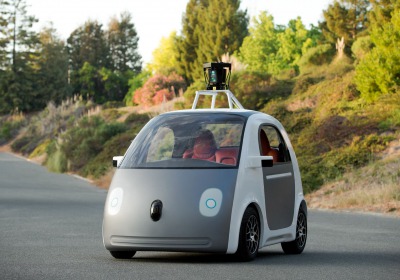Chris Bangle, Peter Stevens and Tom Matano speak out about Google's driverless car
Wed, 04 Jun 2014Google's driverless car technology took a major step on 27 May. The tech firm unveiled its self-designed autonomous car prototype, which will supplement the fleet of modified Toyota Prius and Lexus RX SUVs that have been used thus far.
But what do some of the best-know car designers think of Google's foray into the automotive world? Fast Company decided to find out, and while they came up short on getting current designers to comment, they asked former design chiefs Chris Bangle, Peter Stevens and Tom Matano to give their opinions.
Bangle says, "The single-curve fascination as the concept for a vehicle has been around since The People's Car was being born in Germany." But as for Google's interpretation, "The [car's] 'face' is supposed to be cutesy but is awful weak. Is it a cartoon or not? [Google's] headquarters is near that of Pixar, but evidently not near enough."
Stevens also remains to be convinced, describing the prototype as "a rather unsophisticated and naïvely detailed little two-seat car."
Perhaps most controversially, he adds that "The concept of just sitting there and doing something else rather than driving suggests a passive approach to life, which I find rather sad." We're sure Google would counter with the fact that a passenger of a driverless car has more time to be actively involved with other aspects of life as they travel, via a connected device.
Matano is less scathing of Google's efforts, in fact declaring that the car "looks like a Google. Somewhat quirky and fun, kind of colorful. It presented like Google to me. So the perception of what a Google car would be, I think it's matched, in my opinion."
He also approves of the car's message, stating the car "[could have been] too cold and mechanical... this is more personable, but not too comical."
While there's merit in its technology, Google's other hardware foray, Glass, falls down because the merit in its technology is diluted by a design that appears an afterthought rather than intrinsic.
While the Car project addresses concerns like economy and safety that challenge the future of motoring, by using the same approach as Glass, it remains a product in desperate need of more input from designers if it is to reach its full potential and avoid ridicule.
By Tom Phillips

